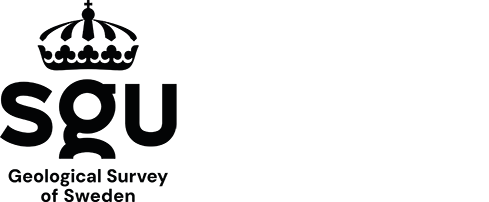
Cobalt ore from Storgruvan in Koppartorp, Tuna bergslag.
Photo: Edine Bakker, SGU
Government assignment – Innovation critical metals and minerals
In February 2018, the Geological Survey of Sweden (SGU) received a special assignment from the Swedish government to document and survey the potential for innovation-critical metals and minerals in Sweden. This assignment has largely been executed in sync with SGU’s Bergslagen projects.
What are innovation-critical metals and minerals?
The so-called innovation-critical metals and minerals are materials today much needed for the development of renewable power sources (wind and solar power), energy storage (batteries), and hi-tech products (computers and cell phones). These metals and minerals include e.g. indium, cobalt, the rare earth elements and graphite. An absolute majority of these materials are produced outside the EU, and the EC has issued warnings that a lack of these materials may hamper the development in green technology and stall the switchover to fossil-free energy sources.
Results and conclusions of the assignment
Potential of the Bergslagen area
Compilation of new and existent analyses in SGU’s databases, for example including data from circa 10,000 metallic deposits and mineralizations, show elevated concentrations of rare earth elements, antimony, gallium, tungsten, indium, niobium, beryllium, cobalt, palladium and platinum. The conclusion is that Bergslagen has potential for mining of innovation-critical metals and minerals.
Sampling and analysis of primary and secondary materials
Existing information from exploration reports, mine maps, drill core logs and ore production statistics was in combination with new sampling of drill cores and mining waste used to identify occurrence of innovation-critical metals and minerals in different mining areas in Bergslagen: Yxsjöberg, Grängesberg and Stollberg. The innovation-critical materials beryllium, bismuth, indium, phosphorous and rare earth elements were detected in the known deposits of tungsten, fluorite, iron, manganese, zinc, and lead.
Detailed study of Vena gruvfält (cobalt)
Vena gruvfält is a historical cobalt deposit in southern Örebro County. High contents of copper and cobalt was confirmed within the mining area, as well as some other innovation-critical, precious, and base metals. Moreover, strongly elevated levels of rare earth elements were detected in an historical iron ore mine, situated in close vicinity to Vena gruvfält - a previously unknown rare earth element deposit.
Geologisk 3D-modell. Vena gruvfält, Askersunds kommun, SGU-rapport 2020:36 (in Swedish)
Undersökning av Vena gruvfält: preliminära resultat från fältarbeten 2018, SGU-rapport 2019:08 (in Swedish)
Ore-proximal surveys in southern Bergslagen: Vena gruvfält and Tunaberg, SGU-rapport 2020:16 (new window)
Detailed study of Tuna bergslag (cobalt)
Tuna bergslag, situated south of Nyköping, is an historical cobalt deposit. Elevated concentrations of cobalt were confirmed, likewise of the innovation-critical metals antimony and bismuth. Elevated contents of precious metals (gold, silver) and base metals (lead, copper, manganese, zinc) was also documented.
Detailed study of Gilltjärn-Skrammelfall (graphite)
The area is situated NW of Norberg, in which the Gilltjärn- och Skrammelfall mines were mined for graphite during World War I. New geophysical data indicate a larger potential than previously known, with graphite-bearing rocks extending farther both vertically and laterally from the existing mines. Regional geophysical data also indicate several nearby pyrrhotite mineralizations, possibly also graphite-bearing.
Detailed study of the Dala granite (indium)
Several innovation-critical metals were documented from greisen-altered Dala granite in western Dalarna County: viz. indium, bismuth, tin and tungsten. High concentrations were also detected of base metals (copper, zinc, lead) and precious metals (gold, silver). Previously unknown greisen-alteration with conspicuous metal concentrations was also found in an area with large volumes of Dala granite.
Innovation-critical metals and minerals in greisen-altered Dala granites, SGU-rapport 2020:06
Geophysical surveys
New airborne geophysical and gravimetry measurements were undertaken in certain areas to improve the supporting information for future exploration of innovation-critical metals and minerals. SGU’s databases are now updated with modern geophysical information.
Soil geochemistry
Elevated levels of for example cobalt, bismuth, vanadinium, and tungsten can in most cases be directly linked to known iron and base metal deposits or mineralizations. This relationship may be used for exploration of innovation-critical metals and minerals.
Report of the previous assignment
The assignment continuous from the previous assignment to map Sweden’s potential for mining of metals and minerals for environmental and technical innovations, which was reported back to the government in 2018 (see links below).
Critical Raw Materials in ores, waste rock and tailings in Bergslagen, SGU-rapport 2020:38
Last reviewed 2020-10-09
